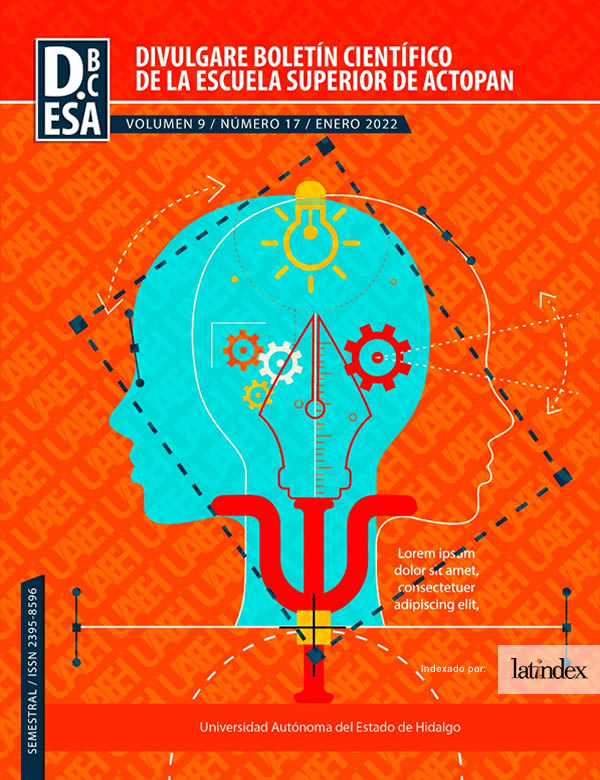Gender Discrepancy and Emotional Discomfort in University Males
Abstract
Introduction: It is written about the gender discrepancy in male university students and its repercussions on the development of emotional distress. Gender discrepancy arises when a person does not perceive themself according to the dominant gender parameters of their context, and in response, hyperstereotyping of their behavior and effects on their mental health may arise. Method: A descriptive, cross-sectional study with mixed methodology was carried out, using a questionnaire to measure the discrepancy and the stress it produces, and later, a semi-structured interview. The experiences of five university men who reported gender discrepancy were analyzed to obtain their perception of it, the associated emotional distress and other effects on their behavior. Results: The main results indicate that due to self-criticism and adverse comments about their masculinity, men experienced different feelings of discomfort, highlighting anger, sadness and fear. Discussion and conclusion: Gender discrepancy and the perception that men have of themselves leads them to reproduce risk behaviors of hegemonic masculinity; the feeling of not complying with these behaviors at the level of other men produces emotional distress.
Downloads
References
Benjet, Corina; Borges, Guilherme; Medina-Mora, María Elena; Méndez, Enrique; Fleiz, Clara; Rojas, Estela y Cruz, Carlos. (2009) Diferencias de sexo en la prevalencia y severidad de trastornos psiquiátricos en adolescentes de la Ciudad de México. Salud Mental, 31. 155-163
Berenzon, Shoshana; Galván, Jorge; Saavedra, Nayelhi; Bernal, Pilar; Mellor-Crummey, Lauren y Tiburcio, Marcela. (2014). Exploración del malestar emocional expresado por mujeres que acuden a centros de atención primaria de la Ciudad de México: Un estudio cualitativo. Salud mental, 37(4), 313-319.
Bonino, Luis. (2000) Varones, género y salud mental- deconstruyendo la “normalidad” masculina. En Segarra, Marta y Carabí, Angels. (Eds), Nuevas masculinidades. Icaría.
Borchert, Jill & Heinberg, Leslie. (2010). Gender Schema and Gender Role Discrepancy as Correlates of Body Image. The Journal of Psychology, 130(5), 547-559
Connell, Robert. (1995). La organización social de la masculinidad en Valdes, Teresa y José Olavarría (ed.). Masculinidad/es: poder y crisis, (Cap. 2, pp. 31-48) ISISFLACSO.
Cucco, Mirtha. (2006). ProCC: Una propuesta de intervención sobre los malestares de la vida cotidiana. Del destino social a la precariedad narcisista. Atuel.
Grimmell, Derek. (1998). Effects of gender-Role Self-Discrepancy on Depressed Mood. Sex roles, 39(314), 203-214.
Hernández, Roberto; Fernández, Carlos y Baptista, Pilar. (2010). Metodología de la investigación. Mc Graw Hill.
Higgins, Tory. (1987,) Self-discrepancy: A theory relating Self and affect, Psychological Review, 94(3), 319-340
Instituto Nacional de las Mujeres. (2006). Panorama de la salud mental en las mujeres y los hombres mexicanos. Disponible en: www.inmujeres.gob.mx
Johnson, Courtney y Petrie, Trent. (1995). The Relationship of Gender Discrepancy to Eating Disorder Attitudes and Behaviors. Sex Roles, 33(5/6), 405-416.
Medina-Mora, María; Borges, Guilherme; Lara, Carmen; Benjet, Corina; Blanco, Jerónimo; Fleiz, Clara; Villatoro, Jorge; Rojas, Estela; Zambrano, Joaquín; Casanova, Leticia y Aguilar-Gaxiola, Sergio. (2003) Prevalencia de trastornos mentales y uso de servicios: Resultados de la Encuesta Nacional de Epidemiología Psiquiátrica en México, Salud Mental. 26(4), 1-16.
Núñez, Guillermo. (2015). Los estudios de género de los hombres y las masculinidades: ¿qué son y qué estudian?. Culturales, 4(1); 9-31.
Organización Mundial de la Salud. (2018). Salud mental: Fortalecer nuestra respuesta. Disponible en: https://www.who.int/es/news-room/fact-sheets/detail/mental-health-strengthening-our-response
Organizacíón Panamericana de la Salud. (2019) Masculinidades y salud en la región de las Américas. Resumen. Washington, D.C.
Pleck, Joseph. (1995). The gender role strain paradigm: An update.en R. F. Levant & W. S. Pollack (Eds.), A new psychology of men (pp. 11–32). Basic Books.
Reidy, Dennis; Berke, Danielle; Gentile, Brittany y Zeichner, Amos. (2014). Man enough? Masculine discrepancy stress and intimate partner violence. Personality and Individual Differences, 68, 160-164.
Scott, Joan. (1986) El género: una categoría útil para el análisis histórico. En Amelang, J., y Nash, M., (Eds), Historia y género: las mujeres en la Europa moderna y contemporánea, Alfons el Magnanim
Vandello, Joseph y Bosson, Jennifer. (2013) Hard won and easily lost: a review and synthesis of theory and research on precarious manhood, Psychology of Men & Masculanity, 14(2), 101-113.
Vargas, Blanca; Villamil, Valerio; Rodríguez, Carmen; Pérez, Jazmín y Cortés, José. (2011). Validación de la escala Kessler 10 (K-10) en la detección de depresión y ansiedad en el primer nivel de atención. Propiedades psicométricas. Salud Mental; 34(4), 323-331.
Yang, Xue; Lau, Joseph; Wang, Zixin; Ma, Ye y Lau, Mason. (2018). The mediation roles of discrepancy stress and self-esteem between masculine role discrepancy and mental health problems. Journal of Affective Disorders, 235(1), 513-520.











